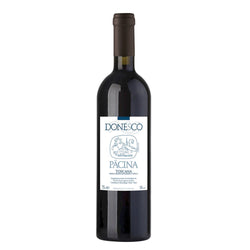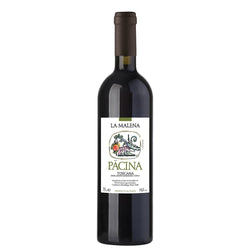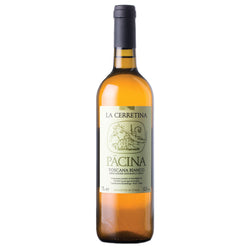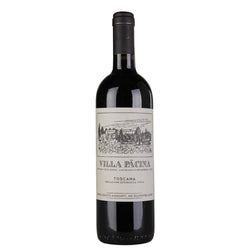PACINA È VINO, OLIO E OSPITALITÀ
Pacina è un convento del decimo secolo con una lunga storia alle spalle, sull’antica via che collegava Arezzo a Siena, il nord dell’Italia a Roma, circondata dai boschi e dalle famose Crete Senesi. Si trova nel comune di Castelnuovo Berardenga ed oggi è di proprietà della famiglia di Stefano e Giovanna Tiezzi Borsa che insieme gestiscono i 10 ettari di vigna e altri 12 tra uliveti, frutteti, cereali, orto e bosco. Un piccolo luogo intenso che ha rispettato per caso, per necessità, per vicende storiche la ricchezza della tradizione ricavandone ancora informazioni. Un piccolo luogo in cui le differenze in qualche modo sono state rispettate e mantenute, differenze dell’habitat variato, sia nella presenza del bosco e di vari tipi di coltivazioni, sia nell’alternarsi del lavoro e del riposo della terra, così che gli ecosistemi vegetali ed animali hanno potuto mantenere la loro ricchezza e le loro interrelazioni. Terra del Chianti Colli Senesi, coltivata quindi maggiormente a Sangiovese, piccole parcelle di Ciliegiolo e Canaiolo, mezzo ettaro piantato a Syrah e un’altro piccolo appezzamento per il pregiato Vin Santo.
PACINA È VINO, OLIO E OSPITALITÀ
Pacina è un convento del decimo secolo con una lunga storia alle spalle, sull’antica via che collegava Arezzo a Siena, il nord dell’Italia a Roma, circondata dai boschi e dalle famose Crete Senesi. Si trova nel comune di Castelnuovo Berardenga ed oggi è di proprietà della famiglia di Stefano e Giovanna Tiezzi Borsa che insieme gestiscono i 10 ettari di vigna e altri 12 tra uliveti, frutteti, cereali, orto e bosco. Un piccolo luogo intenso che ha rispettato per caso, per necessità, per vicende storiche la ricchezza della tradizione ricavandone ancora informazioni. Un piccolo luogo in cui le differenze in qualche modo sono state rispettate e mantenute, differenze dell’habitat variato, sia nella presenza del bosco e di vari tipi di coltivazioni, sia nell’alternarsi del lavoro e del riposo della terra, così che gli ecosistemi vegetali ed animali hanno potuto mantenere la loro ricchezza e le loro interrelazioni. Terra del Chianti Colli Senesi, coltivata quindi maggiormente a Sangiovese, piccole parcelle di Ciliegiolo e Canaiolo, mezzo ettaro piantato a Syrah e un’altro piccolo appezzamento per il pregiato Vin Santo.






